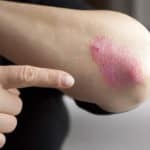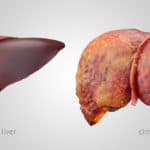Tanning Safety for Hepatitis C
Despite the dangers of sunburn or skin cancer, many fair-skinned folk strive for a golden tan. Whether that color is obtained via sun worship, tanning beds, lotions, sprays or pills, our society seems to treasure a sun-kissed glow. However, several ways people achieve beautiful, bronzed skin have particularly unpleasant consequences for those living with Hepatitis C.
Ultraviolet Rays
A recent report by the International Agency for Research on Cancer (IARC), part of the World Health Organization, concluded that tanning is more dangerous than previously thought. Exposure to ultraviolet (UV) radiation, whether from the sun or indoor tanning beds, can cause:
- Skin cancer
- Skin burns
- Premature skin aging
- Eye damage (both short- and long-term)
Dr. Len Lichtenfeld of the American Cancer Society warns that claims that some tanning beds are “safe” because they use more UVA than UVB radiation in the bulbs have been proven false, and that there is no safe tanning bed. Studies show that the risk of developing skin cancer increases 75 percent in young adults who use tanning beds. Although many types of skin cancer are not deadly, the risk of deadly melanoma increased 20 percent with the use of a tanning bed.
UV radiation does not directly worsen Hepatitis C. However, it does pose problems for those undergoing antiviral treatment, and by adding the risk of skin cancer to an already challenging illness.
Photosensitivity
In many people, certain medications increase skin sensitivity to UV radiation. The current standard of therapy for Hepatitis C, interferon and ribavirin, are included in the ranks of photosensitive drugs. Thus, anyone being treated for Hepatitis C must protect him or herself from the sun and avoid tanning beds.
In a discussion of Hepatitis C therapy, liver expert Melissa Palmer, MD, says “itching may occur anywhere on the body but is most common in sun-exposed areas and at the injection sites. Pruritus (skin itching) frequently occurs at the site of injection of interferon. This type of skin reaction typically occurs within a day or two and may not resolve for up to a month after the injection.” In addition, Palmer cautions, “Avoid tanning salons, as this too may worsen pruritus that occurs while on treatment. If pain, swelling and redness accompany pruritus at the injection site, it should immediately be reported to the doctor or nurse, as it may be a sign of infection.”
A consequence of drug-induced photosensitivity, severe sunburns can occur from sunbathing during Hepatitis C therapy. Before going outside during the day, individuals receiving treatment are encouraged to cover themselves with protective clothing and a hat, as well as use an SPF of at least 30 on the face and any exposed areas.
The Immune System
If you have chronic Hepatitis C, your body’s immune system plays an integral role in the daily battle against this virus. As one of the more important components of a healthy immune system, T cells are critical immune cells that help to destroy infected cells and coordinate the overall immune response. Our defense against bacteria and viruses, the strength of our immune system is essential in preventing Hepatitis C from replicating.
According to Daniel Sauder, chief of dermatology at Johns Hopkins, tanning beds not only damage the skin, but they also do considerable damage to the immune system. According to Sauder, spending a few hours in the sun will alter T cell function. However, spending a short time in a tanning bed decreases T cell capability much more, earning tanning beds a place among immunosuppressive agents. Unfortunate for someone with Hepatitis C, the last thing he or she wants to accomplish is immune system suppression.
Tanning Pills
Although tanning pills are illegal in the U.S., they may still be obtainable on the Internet. While swallowing a pill to get some color sounds like an ideal solution to the dangers of tanning, there is a reason these pills are on the black market. Sunless tanning pills typically contain the color additive canthaxanthin, which is known to cause liver damage. Obviously, someone with Hepatitis C risks worsening the condition of his or her liver by taking tanning pills.
Sunless Tanning
Sunless tanning products can give the skin a tanned look without exposing it to harmful radiation. Applied topically to the skin, sunless tanning products may be in the form of creams, gels, lotions, mists and sprays. The active ingredient in most sunless tanning products is dihydroxyacetone (DHA). When applied to the skin, DHA reacts with dead cells in the outermost layer of skin to temporarily darken the skin’s appearance. While it doesn’t wash off, the color will fade in a few days as dead skin cells slough off.
Topical sunless tanning products are generally considered safe alternatives to sunbathing, as long as they’re used as directed. Due to the potentially unknown hazards of inhaling or ingesting DHA, tans that are sprayed or misted on could pose a risk to those with Hepatitis C if the person’s airways are not properly protected.
Even though they may not be your first choice, sunless tanning lotions appear to be the safest ways to darken your skin – whether or not you are battling Hepatitis C. Because ultraviolet radiation can weaken the immune system and be dangerous for those on antiviral therapy, inhaled DHA safety is unknown and tanning pills are extremely hazardous for those with Hepatitis C, managing this virus presents the perfect opportunity to embrace pale skin.
References:
http://thyroid.about.com/od/endocrineautoimmune1/l/blwork.htm, How Does the Immune System Work?, Mary J. Shomon, Retrieved March 11, 2010, About.com, 2010.
http://www.fda.gov/radiation-emittingproducts/radiationemittingproductsandprocedures/tanning/default.htm, Tanning, Retrieved March 11, 2010, US Food and Drug Administration, 2010.
http://www.findingdulcinea.com/news/health/2009/july/Tanning-Beds-Cause-Cancer–But-Will-People-Stop-Tanning-.html#1, Tanning Beds Cause Cancer, But Will People Stop Tanning?, Haley A. Lovett, Retrieved March 10, 2010, Dulcinea Media, Inc., 2010.
http://www.hepatitis-central.com/mt/archives/2007/03/post_2.html, How Your Immune System Can Help Defeat Hepatitis C, Nicole Cutler, L.Ac., Retrieved March 11, 2010, Natural Wellness, 2010.
http://www.hopkinsmedicine.org/hnf/hnf_3077.htm, Dangers of Tanning Beds: Part Two, Elizabeth Tracey, Retrieved March 10, 2010, Johns Hopkins Medical Institutions, 2010.
http://www.liverhealthtoday.org/viewarticle.cfm?aid=164, Pruritus in its most severe form can be debilitating, Geoff Drushel, Retrieved March 10, 2010, Liver Health Today, 2010.
http://www.mayoclinic.com/health/sunless-tanning/SN00037, Sunless tanning: A safe alternative to sunbathing, Retrieved March 10, 2010, Mayo Foundation for Medical Education and Research, 2010.







